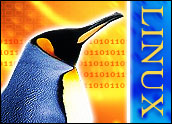
What began as an MIT group project in a Somerville, Mass., garage four years ago has evolved into a unique and successful developer of RFID, sensing and embedded computing technologies. In August, 2000, the original five founders of ThingMagic, all armed with MIT Ph.D.s, came up with an idea for a solution to a problem assigned by the Cambridge-based Auto-ID Center. Since then, the company has begun to seal its place as the supplier of one of the hottest RFID readers available.
It’s no coincidence that the area surrounding MIT is home to many small startups that transform university-bred projects into real-world commercial applications. Still, many of them fail. What’s so special about ThingMagic? The answer is Linux. That is, embedded Linux, combined with RFID, or radio frequency identification technology — just the thing that supply-chain businesses in health, retail and manufacturing are thinking about as the next big wave in inventory tracking and management.
Catching the Wave
The Yankee Group earlier this year said that the RFID market opportunity is expected to reach US$4.2 billion in 2008. Much RFID deployment is still in the pilot stage, and widespread implementation is just about to begin.
ThingMagic has a solid head start. Working with embedded Linux, ThingMagic is creating RFID readers — devices used to feed data to a computer network for tracking merchandise — with a focus on software. “They knew embedded computing was going to be big,” said Kevin Ashton, ThingMagic’s VP of marketing.
Ashton, who joined the group in 2004, said his colleagues had been consulting for various Fortune 500 companies before getting a contract in 2001 to develop an RFID reader, which is used to feed data to a computer network for tracking merchandise.
The call came from the Auto-ID Center, a partnership of companies and research universities based at MIT. At the time, Ashton, who previously was an associate director at Procter & Gamble, also happened to be the Auto-ID Center’s executive director. The center was on a mission to develop standards to ensure that products can be identified no matter which manufacturer tags them, and also to build related software.
The ThingMagic team was handed a challenging assignment: to create a device that can talk to any RFID tag on any radio frequency, that can integrate seamlessly with the Internet, and that can be manufactured very cheaply and in large volumes.
Tag-Savvy Technology
ThingMagic’s team members put their heads together and came back to the center with a device they called the Mercury reader. Improved versions followed, from Mercury1 to Mercury3. Meanwhile, the RFID vendor industry was all ears.
Today, Ashton claims that the latest version, Mercury4, is “probably the preferred RFID reader at the moment … in terms of our sense of the market.” Ashton said that ThingMagic readers “read any tag, which is very important in the RFID world. The total cost of ownership is so much lower that way. One doesn’t have to throw away the reader each time something new comes along.”
According to ThingMagic, the Mercury4 reads all tag varieties — ISO, EPC Class0, EPC Class1 and EPC Class2 — simultaneously, using advanced software-defined radio technology. ThingMagic’s designers also enabled Mercury4 to support multiple frequencies and regional regulatory variations. The first release of Mercury4 supports North American UHF regulations, to be followed by HF, European UHF and Japanese UHF options.
In 2003, ThingMagic announced a collaboration with Intel to develop RFID readers using Intel’s XScale network processors. “We’re 90 percent engineering, and our goal is always to deliver a much more powerful product every year,” said Ashton.
Future Looks Bright
The ThingMagic business model is selling readers not directly to users but through partners, such as hardware manufacturers and integrators. In a deal announced in October, Zebra Technologies has signed on to produce label printers using Mercury4e, an embedded version of the fixed Mercury4 reader. The software architecture allows remote software upgrades for new protocols, including the forthcoming EPC Generation 2.
Is there a competitive threat to ThingMagic’s technology? “Yes, certainly,” said Ashton, from big companies moving into the RFID space as well as from smaller startups. But ThingMagic, because it is all about software engineering, is in a very good spot at the moment.
ThingMagic’s technology addresses diverse protocols in an open architecture, and vendors are expected to turn to that kind of solution as their need for multiprotocol support becomes more and more critical. ThingMagic has been a profitable business since its founding in 2000 — without any venture capital — and its immediate future looks bright.
Would ThingMagic turn away from being acquired by an industry giant in the future? “We would never say never,” said Ashton, but he added, “Our present focus is on growing the company.”




















































